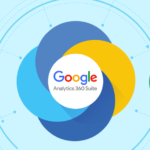Customers control the purchasing process, thus marketers that want to stand out from the flood of competing brands and advertisements must provide customers with focused, individualised experiences. Marketers can choose media, messaging, and timing more wisely when they have a thorough understanding of their target customer.
Let’s examine what a target audience is in detail and the steps you may take to identify your audience segments.
What Is a Target Audience?
Your target audience is the particular demographic of customers most likely to be interested in your product or service and, as a result, the group that should see your advertising efforts. The target audience may be determined by a variety of characteristics, including age, gender, income, location, and hobbies.
Depending on what you sell, your target market may be more general or more specialised. For instance, if you sold shoes, a diverse group of people would be your target market as both men and women and children wear shoes. However, you might specialise in selling high-performance running shoes. Then, a more specialised group of elite athletes between the ages of 20 and 40 who have expressed an interest in running or have completed a marathon would be your target market. In order to identify the creative messaging that will resonate with them and the channels they prefer, it is crucial to define and categorise your target demographic.
Ways to Determine Your Target Audience
1. Examine your clientele and conduct client interviews
Examining the people who have already purchased your goods or services is one of the finest ways to identify your target market. What is their age, place of residence, and area of interest? Engaging in social media activity or sending customer surveys are effective ways to find out this information.
2. Carry out market analysis and spot industry trends
To identify service gaps that your product can solve, look at the market research for your sector. Focus more on your product’s distinct value after looking at trends for comparable items to determine where others are putting their efforts.
3. Examine the competition
Looking at competitors to see who they frequently sell to and how they approach it may teach marketers a lot. Utilizing online or offline channels, respectively Are they concentrating on the supporter or the decision-maker?
4. Specify who your target audience isn’t in
There will undoubtedly be people in your target market who do not respond to messaging. When identifying who your audience is and isn’t, try to be as specific as possible. Is your target market primarily females or females between the ages of 20 and 40? Knowing this will prevent your teams from investing advertising funds in areas that won’t generate returns.
5. Continuously Revise
You will get a more precise understanding of your target audiences as you acquire more information and engage with clients. Based on this knowledge, you must continually refine and enhance personas to get the greatest outcomes.
6. Employ Google Analytics
Google Analytics provides a wealth of information about the people who visit your website. Making more data-driven decisions during the media planning process will enable you to identify critical insights such as the channels your target audience is using or the types of content they connect and engage with most.





